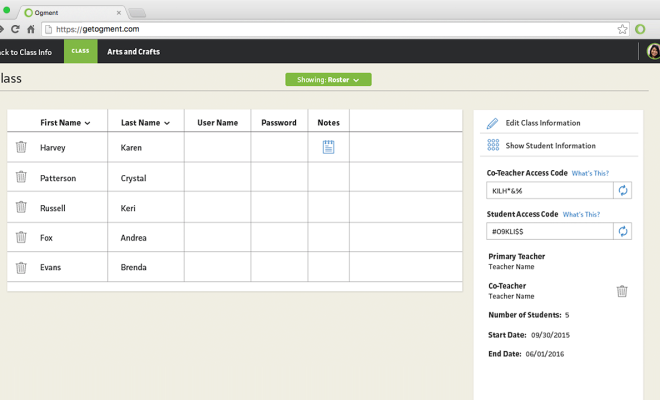Five Ways to Leverage Wearable Technology in the Classroom

There is no doubt that technology both improves and complicates education. Technology can turn education into a more interactive, global experience, though it also raises new issues regarding classroom management and student misuse of class time. However, with guidance and dedication, teachers can implement wearable technology to help students engage with lessons on a deeper, more intrinsic level. Here are 5 ways educators can leverage wearable technology to enhance student engagement.
1. Fitness Trackers
Fitness trackers, like FitBit or the Adidas Zone, can help students take ownership of their physical education and health classes. Instead of running a mile only once a week, students can monitor their daily fitness growth and progress over the term of the class. Physical education teachers can assign fitness homework and have access to monitoring, track the students as they make and reach health and fitness goals, and adjust their classes to accommodate the students’ changing fitness levels. This can make fitness goals and tests less competitive since physical competition can be intimidating for some students. On the other hand, students who are motivated by competition can enter into small-group competitions through their fitness trackers.
2. Virtual Reality
History, civics, and language teachers can make instruction true-to-life through the use of virtual reality headsets in their classrooms. Virtual reality allows users to feel immersed in another place or experience, an invaluable asset for students learning about foreign cultures, cities, or ancient empires. Teachers can lead virtual tours through the cities and events they’re teaching about, instead of relying on pictures, posters, and slideshows. Students can move from reading about a country to viewing its geography on a map, to walking the streets of its cities using virtual reality headgear.
3. Smart Watches
Smartwatches are a great way to enhance student-teacher communication and help students hold themselves accountable. Smartwatches increase students’ ability to self-monitor and self-regulate their learning experiences. Smartwatches can be synced to a user’s phone or tablet and can increase communication between teachers and students. Students can send questions to a teacher remotely (if they’re too shy to ask aloud), schedule and receive reminders about school work, or be used as an alarm or remote.
4. GoPro and Video Recorders
GoPro is just one of several portable, wearable video recorders on the market. They can be used by teachers to record lessons and in-class experiences to be used by students who are absent or unable to attend traditional school, or they can be used to enhance the learning environment. GoPro allows the student to take the driver’s seat in exploring the world around them as it relates to the curriculum of a class, especially in journalism, communication, and television production classes.
5. Google Glass
Google Glasses are perhaps the pinnacle of wearable technology. They take all the capabilities of a phone or tablet and wrap them around a student’s head in a pair of glasses. They are equipped with 4G and wireless internet technology, meaning that students can use them for both classroom input as well as output. Teachers can communicate with students, watch a student’s process (and not just the final result) in doing work through the Google Glass’ camera, and communicate with them in real-time, even when the students are at home. Google Glass is also hands-free, meaning it won’t interfere with the students’ other in-class tasks.
While these wearable technologies have creative uses in the regular education classroom, there are also a lot of exciting implications for special education students as well. Students with autism, for example, who may have difficulty communicating may find comfort in constant access to technology – like the Google Glass or smart watches – that allow them to view and communicate from behind a comfortable distance. These technologies also allow students to demonstrate their learning and understanding in deeper, more practical ways than traditional standardized tests or pen-and-paper responses.
Technology may offer certain temptations to students – Facebook, Instagram, and Twitter are easy to use for personal, non-academic reasons – and may at times make it harder for teachers to monitor their students, but the potential benefits of wearable technology far outweigh these hypothetical challenges. Wearable technology can make education more accessible, meaningful, and engaging for students of all abilities and interests.






